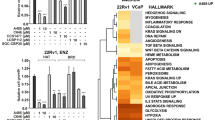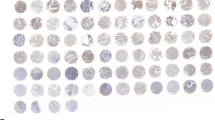Abstract
Pheochromocytoma (PCC) is a tumor of the adrenal medulla for which surgical resection is the only therapy approach. Risk factors responsible for the tumorigenesis and progression of PCC are not well illustrated. Our present study revealed that an industrial chemical, bisphenol S (BPS), can promote the migration and invasion of PCC PC12 cells, which was evidenced by the upregulation of fibronectin (FN) and matrix metalloproteinases (MMP-2 and MMP-9). The inhibitor of estrogen-related receptor α (ERRα), while not estrogen receptor α/β (ERα/β) or G protein-coupled estrogen receptor (GPER), can attenuate BPS-induced cell migration. Mechanically, BPS can increase the binding between ERRα and promoter of FN1 and then induce the expression of FN in PC12 cells. Further, BPS can induce the expression of miR-10b in PC12 cells via ERRα. The upregulated miR-10b inhibited the expression of KLF4, which can suppress the migration and invasion of cancer cells. BPS can trigger the mRNA and protein expression of ERRα in PC12 cells via a time-dependent manner. Collectively, our study revealed that nanomolar BPS can trigger the migration and invasion of PC12 cells via activation and upregulation of ERRα.






Similar content being viewed by others
References
Bianco S, Lanvin O, Tribollet V, Macari C, North S, Vanacker JM (2009) Modulating estrogen receptor-related receptor-alpha activity inhibits cell proliferation. J Biol Chem 284:23286–23292
Chen MY, Ike M, Fujita M (2002) Acute toxicity, mutagenicity, and estrogenicity of bisphenol-A and other bisphenols. Environ Toxicol 17:80–86
Chen Z, Wang Y, Liu W, Zhao G, Lee S, Balogh A, Zou Y, Guo Y, Zhang Z, Gu W, Li C, Tigyi G, Yue J (2014) Doxycycline inducible Kruppel-like factor 4 lentiviral vector mediates mesenchymal to epithelial transition in ovarian cancer cells. PLoS One 9:e105331
Chen H, Fan Y, Xu W, Chen J, Xu C, Wei X, Fang D, Feng Y (2016) miR-10b inhibits apoptosis and promotes proliferation and invasion of endometrial cancer cells via targeting HOXB3. Cancer Biother Radiopharm 31:225–231
Deng Q, Jiang G, Wu Y, Li J, Liang W, Chen L, Su Q, Li W, du J, Wong CKC, Chen Z, Wang H (2018) GPER/Hippo-YAP signal is involved in bisphenol S induced migration of triple negative breast cancer (TNBC) cells. J Hazard Mater 355:1–9
Ding J, Huang F, Wu G, Han T, Xu F, Weng D, Wu C, Zhang X, Yao Y, Zhu X (2015) MiR-519d-3p suppresses invasion and migration of trophoblast cells via targeting MMP-2. PLoS One 10:e0120321
Ding S, Tang Z, Jiang Y, Huang H, Luo P, Qing B, Zhang S, Tang R (2017) IL-8 is involved in estrogen-related receptor alpha-regulated proliferation and migration of colorectal cancer cells. Dig Dis Sci 62:3438–3446
Ferriere F, Habauzit D, Pakdel F, Saligaut C, Flouriot G (2013) Unliganded estrogen receptor alpha promotes PC12 survival during serum starvation. PLoS One 8:e69081
Fic A, Mlakar SJ, Juvan P, Mlakar V, Marc J, Dolenc MS et al (2015) Genome-wide gene expression profiling of low-dose, long-term exposure of human osteosarcoma cells to bisphenol A and its analogs bisphenols AF and S. Toxicol in Vitro 29:1060–1069
Galan SR, Kann PH (2013) Genetics and molecular pathogenesis of pheochromocytoma and paraganglioma. Clin Endocrinol 78:165–175
Guan L, Ji D, Liang N, Li S, Sun B (2018) Up-regulation of miR-10b-3p promotes the progression of hepatocellular carcinoma cells via targeting CMTM5. J Cell Mol Med 22:3434–3441
Habauzit D, Ferriere F, Botherel N, Flouriot G, Pakdel F, Saligaut C (2014) Differentiation of PC12 cells expressing estrogen receptor alpha: a new bioassay for endocrine-disrupting chemicals evaluation. Chemosphere 112:240–247
Herrero O, Aquilino M, Sanchez-Arguello P, Planello R (2018) The BPA-substitute bisphenol S alters the transcription of genes related to endocrine, stress response and biotransformation pathways in the aquatic midge Chironomus riparius (Diptera, Chironomidae). PLoS One 13:e0193387
Huang X, Wang X, Shang J, Zhaang Z, Cui B, Lin Y, Yang Y, Song Y, Yu S, Xia J (2018) Estrogen related receptor alpha triggers the migration and invasion of endometrial cancer cells via up regulation of TGFB1. Cell Adhes Migr:1–21
Kim JY, Choi HG, Lee HM, Lee GA, Hwang KA, Choi KC (2017) Effects of bisphenol compounds on the growth and epithelial mesenchymal transition of MCF-7 CV human breast cancer cells. J Biomed Res 31:358–369
Kinch CD, Ibhazehiebo K, Jeong JH, Habibi HR, Kurrasch DM (2015) Low-dose exposure to bisphenol A and replacement bisphenol S induces precocious hypothalamic neurogenesis in embryonic zebrafish. Proc Natl Acad Sci U S A 112:1475–1480
Kuiper GG, Carlsson B, Grandien K, Enmark E, Haggblad J, Nilsson S et al (1997) Comparison of the ligand binding specificity and transcript tissue distribution of estrogen receptors alpha and beta. Endocrinology 138:863–870
Le Fol V, Ait-Aissa S, Sonavane M, Porcher JM, Balaguer P, Cravedi JP et al (2017) In vitro and in vivo estrogenic activity of BPA, BPF and BPS in zebrafish-specific assays. Ecotoxicol Environ Saf 142:150–156
Lee YM, Seong MJ, Lee JW, Lee YK, Kim TM, Nam SY, Kim DJ, Yun YW, Kim TS, Han SY, Hong JT (2007) Estrogen receptor independent neurotoxic mechanism of bisphenol A, an environmental estrogen. J Vet Sci 8:27–38
Li H, Wang J, Xiao W, Xia D, Lang B, Yu G, Guo X, Guan W, Wang Z, Hu Z, Liu J, Ye Z, Xu H (2013) Epigenetic alterations of Kruppel-like factor 4 and its tumor suppressor function in renal cell carcinoma. Carcinogenesis 34:2262–2270
Li Q, Song W, Wang W, Yao S, Tian C, Cai X, Wang L (2016) Suppression of epithelial-mesenchymal transition in hepatocellular carcinoma cells by Kruppel-like factor 4. Oncotarget 7:29749–29760
Liao C, Liu F, Alomirah H, Loi VD, Mohd MA, Moon HB, Nakata H, Kannan K (2012) Bisphenol S in urine from the United States and seven Asian countries: occurrence and human exposures. Environ Sci Technol 46:6860–6866
Luo HJ, Li YT, Liu B, Yang YT, Xu ZQD (2017) MicroRNA-15b-5p targets ERK1 to regulate proliferation and apoptosis in rat PC12 cells. Biomed Pharmacother 92:1023–1029
Merot Y, Ferriere F, Gailhouste L, Huet G, Percevault F, Saligaut C et al (2009) Different outcomes of unliganded and liganded estrogen receptor-alpha on neurite outgrowth in PC12 cells. Endocrinology 150:200–211
Montalban E, Mattugini N, Ciarapica R, Provenzano C, Savino M, Scagnoli F, Prosperini G, Carissimi C, Fulci V, Matrone C, Calissano P, Nasi S (2014) MiR-21 is an Ngf-modulated microRNA that supports Ngf signaling and regulates neuronal degeneration in PC12 cells. NeuroMolecular Med 16:415–430
Nishimura Y, Nagao T, Fukushima N (2014) Long-term pre-exposure of pheochromocytoma PC12 cells to endocrine-disrupting chemicals influences neuronal differentiation. Neurosci Lett 570:1–4
Pappachan JM, Raskauskiene D, Sriraman R, Edavalath M, Hanna FW (2014) Diagnosis and management of pheochromocytoma: a practical guide to clinicians. Curr Hypertens Rep 16:442
Parenti G, Zampetti B, Rapizzi E, Ercolino T, Giache V, Mannelli M (2012) Updated and new perspectives on diagnosis, prognosis, and therapy of malignant pheochromocytoma/paraganglioma. J Oncol 2012:872713
Rochester JR, Bolden AL (2015) Bisphenol S and F: a systematic review and comparison of the hormonal activity of bisphenol A substitutes. Environ Health Perspect 123:643–650
Rubin BS (2011) Bisphenol A: an endocrine disruptor with widespread exposure and multiple effects. J Steroid Biochem Mol Biol 127:27–34
Sarver AL, Li LH, Subramanian S (2010) MicroRNA miR-183 functions as an oncogene by targeting the transcription factor EGR1 and promoting tumor cell migration. Cancer Res 70:9570–9580
Seki S, Aoki M, Hosokawa T, Saito T, Masuma R, Komori M, Kurasaki M (2011) Bisphenol-A suppresses neurite extension due to inhibition of phosphorylation of mitogen-activated protein kinase in PC12 cells. Chem Biol Interact 194:23–30
Tate MC, Shear DA, Hoffman SW, Stein DG, Archer DR, LaPlaca MC (2002) Fibronectin promotes survival and migration of primary neural stem cells transplanted into the traumatically injured mouse brain. Cell Transplant 11:283–295
Terasawa K, Ichimura A, Sato F, Shimizu K, Tsujimoto G (2009) Sustained activation of ERK1/2 by NGF induces microRNA-221 and 222 in PC12 cells. FEBS J 276:3269–3276
Thayer KA, Taylor KW, Garantziotis S, Schurman SH, Kissling GE, Hunt D, Herbert B, Church R, Jankowich R, Churchwell MI, Scheri RC, Birnbaum LS, Bucher JR (2016) Bisphenol A, bisphenol S, and 4-hydroxyphenyl 4-isoprooxyphenylsulfone (BPSIP) in urine and blood of cashiers. Environ Health Perspect 124:437–444
Tian YY, Luo AP, Cai YR, Su Q, Ding F, Chen HY, Liu Z (2010) MicroRNA-10b promotes migration and invasion through KLF4 in human esophageal cancer cell lines. J Biol Chem 285:7986–7994
Tian Z, Fan J, Zhao Y, Bi S, Si L, Liu Q (2013) Estrogen receptor beta treats Alzheimer’s disease. Neural Regen Res 8:420–426
Vina J, Sastre J, Pallardo FV, Gambini J, Borras C (2006) Role of mitochondrial oxidative stress to explain the different longevity between genders: protective effect of estrogens. Free Radic Res 40:1359–1365
Wang J, Wang B, Chen LQ, Yang J, Gong ZQ, Zhao XL, Zhang CQ, du KL (2016a) miR-10b promotes invasion by targeting KLF4 in osteosarcoma cells. Biomed Pharmacother 84:947–953
Wang Y, Li Z, Zhao X, Zuo X, Peng Z (2016b) miR-10b promotes invasion by targeting HOXD10 in colorectal cancer. Oncol Lett 12:488–494
Watkins DJ, Sanchez BN, Tellez-Rojo MM, Lee JM, Mercado-Garcia A, Blank-Goldenberg C et al (2017) Phthalate and bisphenol A exposure during in utero windows of susceptibility in relation to reproductive hormones and pubertal development in girls. Environ Res 159:143–151
Wu YM, Chen ZJ, Liu H, Wei WD, Lu LL, Yang XL, Liang WT, Liu T, Liu HL, du J, Wang HS (2015) Inhibition of ERRα suppresses epithelial mesenchymal transition of triple negative breast cancer cells by directly targeting fibronectin. Oncotarget 6:25588–25601
Wu LH, Zhang XM, Wang F, Gao CJ, Chen D, Palumbo JR, Guo Y, Zeng EY (2018) Occurrence of bisphenol S in the environment and implications for human exposure: a short review. Sci Total Environ 615:87–98
Xu X, Chen Z, Zhao X, Wang J, Ding D, Wang Z, Tan F, Tan X, Zhou F, Sun J, Sun N, Gao Y, Shao K, Li N, Qiu B, He J (2012) MicroRNA-25 promotes cell migration and invasion in esophageal squamous cell carcinoma. Biochem Biophys Res Commun 421:640–645
Yang L, Song X, Zhu J, Li M, Ji Y, Wu F, Chen Y, Cui X, Hu J, Wang L, Cao Y, Wei Y, Zhang W, Li F (2017) Tumor suppressor microRNA-34a inhibits cell migration and invasion by targeting MMP-2/MMP-9/FNDC3B in esophageal squamous cell carcinoma. Int J Oncol 51:378–388
Zhang Z, Alomirah H, Cho HS, Li YF, Liao C, Minh TB, Mohd MA, Nakata H, Ren N, Kannan K (2011) Urinary bisphenol A concentrations and their implications for human exposure in several Asian countries. Environ Sci Technol 45:7044–7050
Zou HJ, Ding Y, Shi WF, Xu X, Gong AH, Zhang ZJ et al (2018) MicroRNA-29c/PTEN pathway is involved in mice brain development and modulates neurite outgrowth in PC12 cells (vol 35, pg 313, 2017). Cell Mol Neurobiol 38:575
Author information
Authors and Affiliations
Corresponding authors
Ethics declarations
Conflict of Interest
The authors declare that they have no conflict of interest.
Rights and permissions
About this article
Cite this article
Jia, Y., Sun, R., Ding, X. et al. Bisphenol S Triggers the Migration and Invasion of Pheochromocytoma PC12 Cells via Estrogen-Related Receptor α. J Mol Neurosci 66, 188–196 (2018). https://doi.org/10.1007/s12031-018-1148-5
Received:
Accepted:
Published:
Issue Date:
DOI: https://doi.org/10.1007/s12031-018-1148-5




